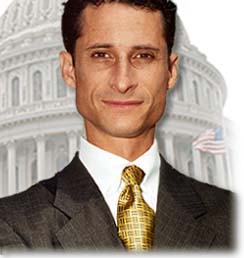 Recruiting strategies around social media are evolving. We’re seeing more emphasis on talent communities and less on broadcasting jobs over social networks. But anyone who’s building a talent community would do well to learn from the recently departed Democratic congressman from New York.
Recruiting strategies around social media are evolving. We’re seeing more emphasis on talent communities and less on broadcasting jobs over social networks. But anyone who’s building a talent community would do well to learn from the recently departed Democratic congressman from New York.
The congressman created a large community — more than 82,000 followers on Twitter and about 34,000 on Facebook, mostly based on his antics on the House floor and his dyspeptic public pronouncements. This is a common approach to starting a talent community: set up the infrastructure (links on the careers section, easy registration) and generate buzz by whatever means possible — SEO, content broadcast as widely as possible, etc. The goal being to attract as many prospective candidates as possible. But as many have learned, when it comes to talent communities getting it up is easy, but then it gets hard.
This may be a good strategy for building a brand, but it’s no guarantee of hires. It gets your employment message in front of a lot of people, many of whom will be attracted to you (or at least give the impression that they are). But closing the deal — getting from an online relationship to a real one — can be dauting.
Size Doesn’t Matter
The conventional wisdom behind talent communities is that bigger is better. But don’t confuse popularity with influence. Influence is what’s needed to convert members of a talent community into hires. And real engagement is only possible with prospects who are attracted to an employer for the right reasons — they have the skills needed and already have or can be encouraged to develop a passion for working there. These are necessary conditions for having a useful talent community. Lacking one or the other, you can have a community filled with lots of unqualified or marginally interested people — hardly the kind you want to hire.
The goal of any recruiting strategy should be to build a reliable, repeatable source of hires. Getting a lot of people in a talent community does not mean that most are either qualified or really suited for the openings you’re trying to fill. You may get lucky (unlike the Congressman) and get a few hires, but that success may not be easily duplicated.
The recruiting leader for a large consulting firm recently told me that two years after his company established talent communities, it had registered more than 200,000 members but fewer than 1% of its hires were coming from the community. Lacking the staff and resources to try and engage with the community meant that what they’d managed to produce was just a marketing database. Worse, the lack of engament has resulted in disillusionment and created very negative feelings toward the company, which they now have to overcome in future recruitment efforts. His advice: “build micro talent communities” and then only when you have the capability to engage with them.
The Shortest Distance Is Still a Straight Line
The challenge for most recruiters is having the time to engage with people in a community. Ideally, the number in a community should be a manageable amount of qualified and interested people. This means the community is designed to attract the right kinds of people, or prospective candidates are channeled into micro-communities based on criteria that group similar individuals together.
This is an easier way to build engagement, because it also gives members of the community the opportunity to interact with each other. That’s much more likely when they have a lot in common. One of the more successful examples of this is Sermo, a community of physicians grouped by speciality.
Another solution to reduce the burden on recruiters is to use some form of social games. An example of this is TopCoder — a community where members compete for small prizes by solving problems. The point being that the community must offer something that keeps people coming back, without relying on recruiters to generate content.
That allows recruiters to focus on hiring without having to spend a lot of time on activities that, while essential, are not likely to show an immediate benefit.
Weiner on Talent
Representative Weiner long had something to offer to the talent acquisition community. He sponsored a bill to create a separate category of visas for fashion models. Regrettably it failed to pass.
We’d be wise to learn from his activities in social media. Many employers make this unnecessarily complicated. Focus on small communities of qualified, engaged people and converting them to hires won’t leave you feeling limp with the effort.